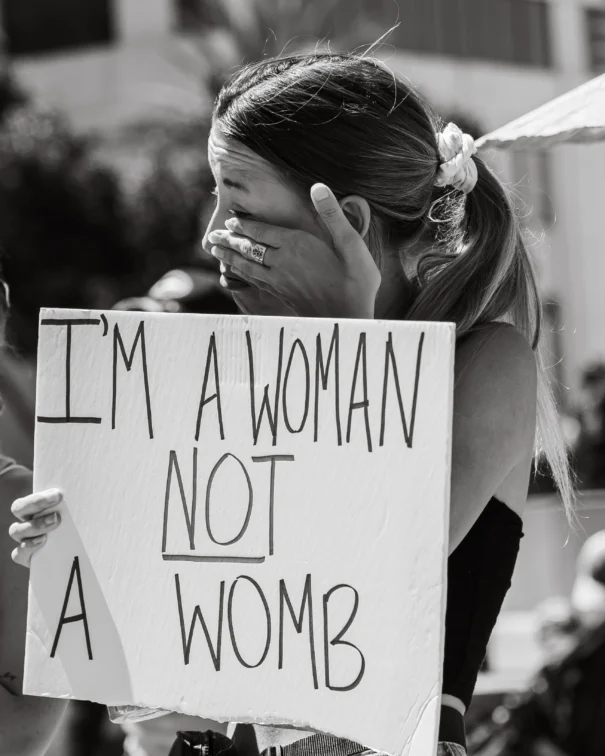
Photo by Reed Naliboff
In a pivotal moment for reproductive rights in America, the Supreme Court has declined to intervene in the clash between federal emergency care law and Texas’ near-total abortion ban. This decision marks a significant setback for advocates of reproductive rights and has far-reaching implications, particularly for women of color in Texas.
The high court’s rejection of the Biden administration’s appeal means that the lower court decision blocking the federal government from enforcing its guidance on emergency abortions will stand. This guidance, issued by the Department of Health and Human Services in July 2022, stated that when a state’s abortion law doesn’t include exceptions for the life and health of the mother, it’s preempted by the federal Emergency Medical Treatment and Labor Act (EMTALA).
The Supreme Court’s decision not to intervene leaves several critical issues unresolved. It fails to provide clarity on whether physicians in states with the most restrictive laws must provide abortion care in certain emergency circumstances. It leaves a lower court ruling that prevents the federal government from enforcing its interpretation of EMTALA in Texas. Furthermore, it creates a potential patchwork of emergency care standards across the country, with Texas operating under different rules than other states.
Texas officials argue that their state law allows for abortions when the mother is at risk of death or faces a serious risk of “substantial impairment of a major bodily function.” However, medical professionals and legal experts point out that the law’s language is vague and open to interpretation, creating a chilling effect on healthcare providers. The Texas Supreme Court recently ruled that state law doesn’t require the mother’s death to be imminent or that she suffer physical impairment to perform an abortion. However, this clarification has done little to assuage the fears of healthcare providers, who still face potential criminal charges if their interpretation of “substantial impairment” differs from that of prosecutors.
The implications of this decision are particularly severe for women of color, especially Black women in Texas. Statistical evidence paints a grim picture. Black women in Texas are already three to four times more likely to die from pregnancy-related causes than white women. This disparity is expected to widen under the current restrictions. Black women are more likely to experience maternal health complications throughout pregnancy, and the restriction on abortion access exacerbates these risks. Many Black women lack access to proper prenatal care, especially in rural and low-income areas. The abortion ban compounds these existing healthcare disparities.
The abortion ban’s impact extends beyond physical health. Almost 40% of Black people who give birth experience maternal mental health conditions, yet they are half as likely to receive treatment compared to white women. Experts anticipate an increase in poverty rates among Black women due to job losses related to pregnancy complications and childcare needs. The ban’s effects ripple through entire communities, as Black women are often primary breadwinners and caregivers in their families and broader social networks.
The medical community in Texas finds itself in an untenable position. Doctors must now weigh medical ethics against potential legal consequences, often at the expense of patient care. The law’s vague language has led to hesitation in providing necessary care, even in cases that might qualify as medical emergencies. This situation has led to increased requests for sterilization procedures among women fearing pregnancy under the current legal framework. There’s a chilling effect on obstetrics and gynecology practice in Texas, with some doctors considering leaving the state. Delays in care for women experiencing pregnancy complications have become more common as doctors wait for conditions to worsen before intervening.
The Texas case is not isolated. It reflects a broader national trend following the overturning of Roe v. Wade. Nearly two dozen states have passed measures curtailing access to abortion, and fourteen states now have bans with limited exceptions. The conflict between state abortion bans and federal emergency care law is likely to play out in other states, potentially leading to a patchwork of emergency care standards across the country.
The Supreme Court’s decision to uphold the Texas abortion ban marks a critical juncture in the ongoing struggle for reproductive rights in America. For women in Texas, particularly women of color, it represents a significant threat to their health, autonomy, and economic well-being. As the situation continues to evolve, it’s clear that the fight for reproductive justice in Texas and across the nation is far from over. The coming months and years will likely see intensified legal battles, political campaigns, and grassroots activism as advocates work to protect and restore reproductive rights.
The Texas case serves as a stark reminder of the complex interplay between state and federal law, the role of the judiciary in shaping healthcare policy, and the real-world impacts of these legal and political decisions on the lives of women, particularly those from marginalized communities. As this crisis deepens, it demands continued attention, analysis, and action from all those committed to reproductive rights and health equity.